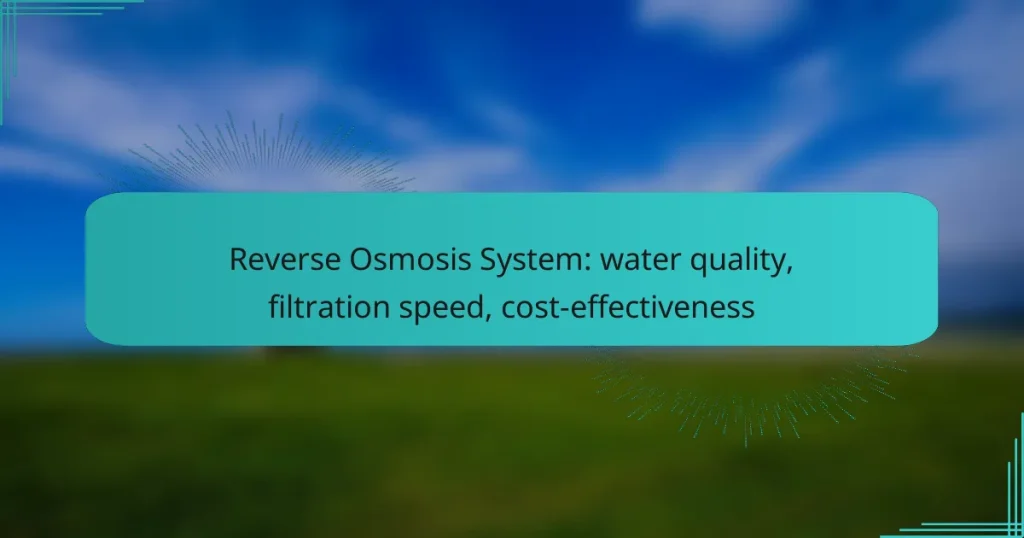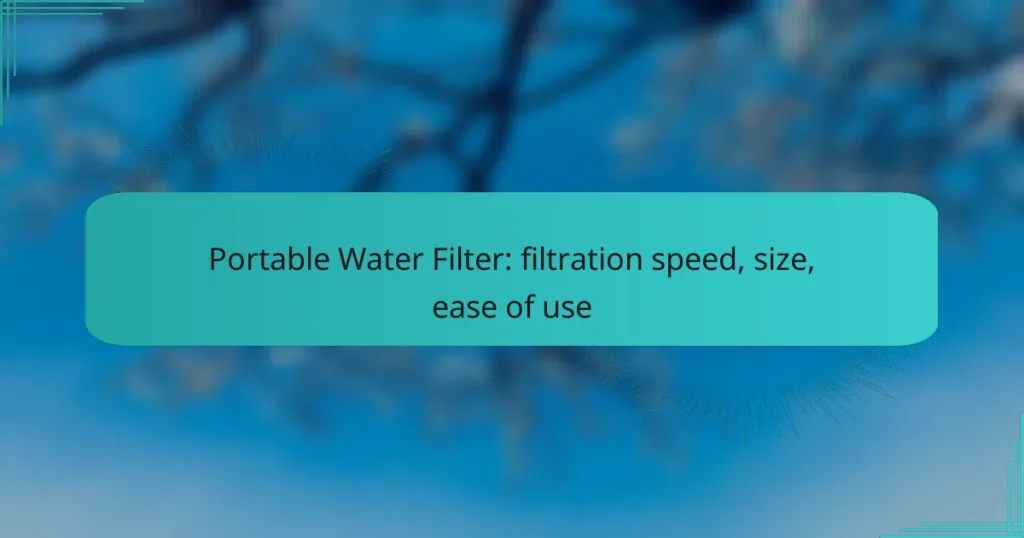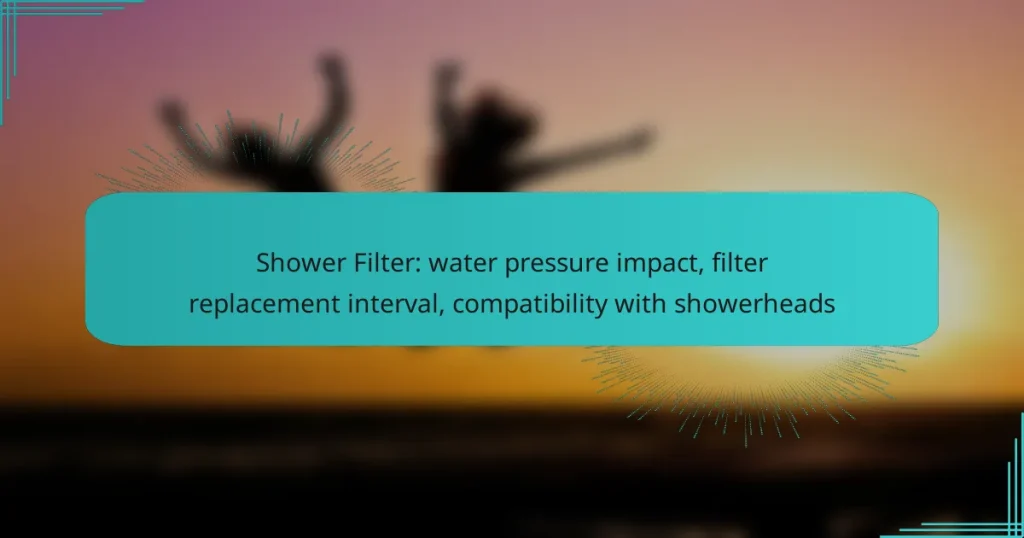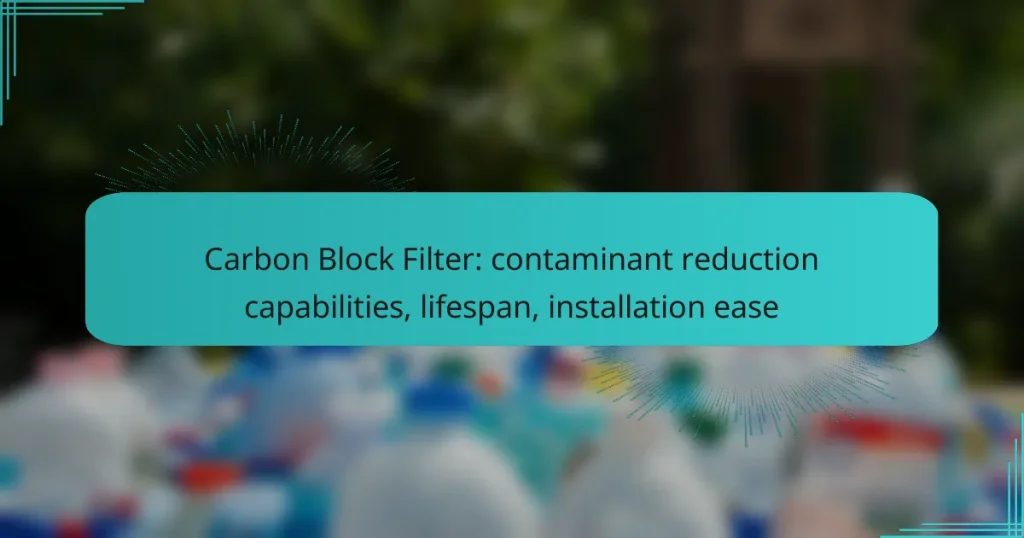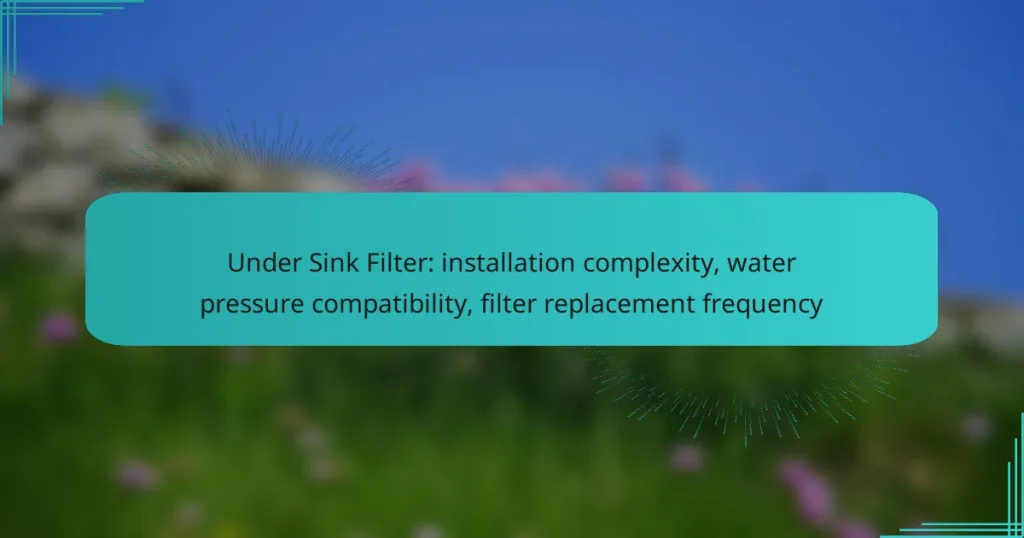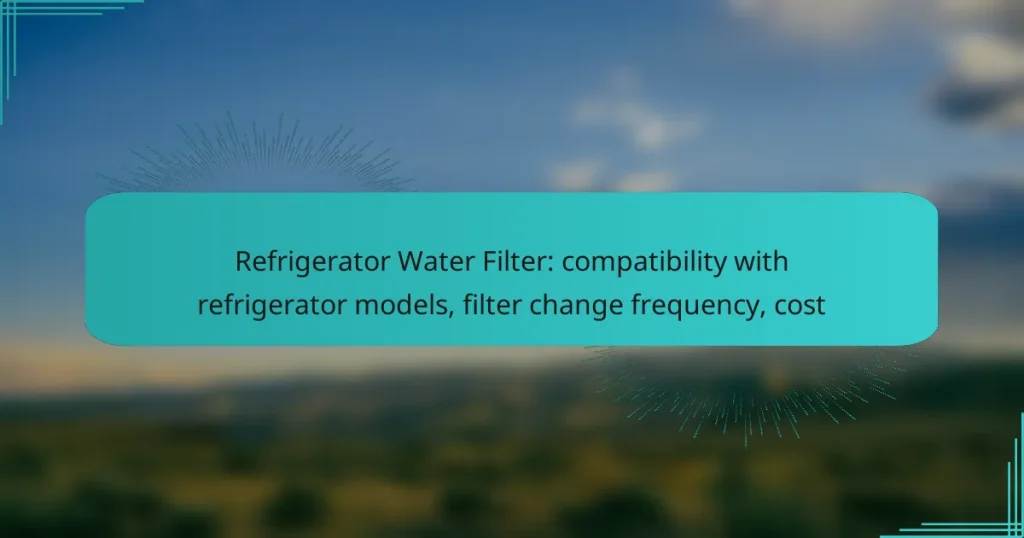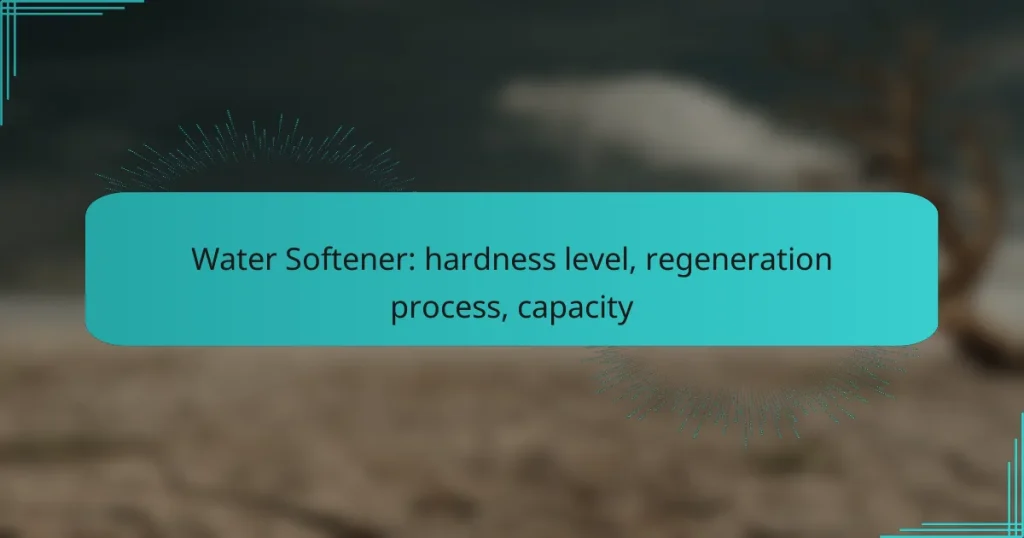Choosing the right water filtration system is essential for ensuring clean and safe drinking water tailored to your needs. With various options available, such as reverse osmosis systems and activated carbon filters, it’s important to assess your water quality and filtration requirements. By understanding the benefits and maintenance of each type, you can make an informed decision that enhances your water quality and fits your lifestyle.
Ceramic Filter: filtration efficiency, durability, maintenance needs
Portable Water Filter: filtration speed, size, ease of use
Shower Filter: water pressure impact, filter replacement interval, compatibility with showerheads
Carbon Block Filter: contaminant reduction capabilities, lifespan, installation ease
Under Sink Filter: installation complexity, water pressure compatibility, filter replacement frequency
Refrigerator Water Filter: compatibility with refrigerator models, filter change frequency, cost
Water Distiller: energy requirements, output rate, maintenance needs
Inline Water Filter: installation process, filter lifespan, compatibility with existing plumbing
Water Softener: hardness level, regeneration process, capacity
What are the best water filtration systems in the UK?
The best water filtration systems in the UK include reverse osmosis systems, activated carbon filters, UV water purifiers, whole house filtration systems, and pitcher filters. Each type offers unique benefits and considerations based on water quality, installation requirements, and maintenance needs.
Reverse osmosis systems
Reverse osmosis (RO) systems are highly effective at removing contaminants from water, including heavy metals, salts, and microorganisms. They work by forcing water through a semi-permeable membrane, leaving impurities behind. Consider that these systems typically require professional installation and may waste some water during the filtration process.
When selecting an RO system, check for certifications like NSF/ANSI standards to ensure quality. Maintenance involves regular filter changes, usually every 6 to 12 months, depending on usage and water quality.
Activated carbon filters
Activated carbon filters are popular for their ability to improve taste and remove chlorine, volatile organic compounds (VOCs), and some heavy metals. They function by adsorbing contaminants onto the surface of carbon granules. These filters are often used in under-sink systems and pitcher filters.
While effective for many common pollutants, they do not remove all contaminants, such as nitrates or certain pathogens. Regular replacement of the carbon filter is essential, typically every 2 to 6 months, to maintain effectiveness.
UV water purifiers
UV water purifiers use ultraviolet light to kill bacteria, viruses, and other microorganisms. This method is chemical-free and does not alter the taste or odor of water. UV systems are often used in conjunction with other filtration methods to ensure comprehensive purification.
For optimal performance, ensure the water is pre-filtered to remove sediments that can shield microorganisms from UV light. Regular maintenance includes replacing the UV lamp annually and cleaning the quartz sleeve to maintain efficiency.
Whole house filtration systems
Whole house filtration systems treat all the water entering a home, providing clean water for drinking, cooking, and bathing. These systems can include a combination of filtration methods, such as sediment filters, carbon filters, and water softeners, depending on the specific needs of the household.
Installation can be complex and may require professional assistance. Regular maintenance is crucial, with filter changes typically needed every 6 to 12 months, depending on the system and water quality.
Pitcher filters
Pitcher filters are a convenient and affordable option for improving drinking water quality. These simple devices use activated carbon to reduce contaminants and improve taste. They are easy to use and require no installation, making them ideal for renters or those seeking a quick solution.
However, pitcher filters have limited capacity and may not remove all contaminants effectively. Regular filter replacement is necessary, usually every 1 to 3 months, to ensure optimal performance. Consider the volume of water you consume to determine if this option meets your needs.
How to choose a water filtration system?
Choosing a water filtration system involves assessing your water quality, determining your filtration needs, considering installation types, and evaluating maintenance requirements. Each step ensures that you select a system that effectively improves your water quality and fits your lifestyle.
Assess water quality
Start by testing your water to identify contaminants such as chlorine, lead, bacteria, or sediment. Many local health departments offer testing services or you can purchase a home testing kit. Understanding your water quality will guide you in selecting the appropriate filtration system.
For example, if your water has high levels of chlorine, a carbon filter may be effective. Conversely, if lead is a concern, a reverse osmosis system would be more suitable.
Determine filtration needs
Your filtration needs depend on the specific contaminants present and your household’s water consumption. Consider how many people live in your home and how much water you use daily. This will help you choose a system with the right capacity.
For instance, a small household may only need a point-of-use filter, while larger families might require a whole-house filtration system. Assessing your needs ensures you invest in a system that meets your demands without overspending.
Consider installation type
Water filtration systems come in various installation types, including under-sink, countertop, and whole-house systems. Under-sink systems are often more discreet and efficient, while countertop models are easier to install and remove.
Whole-house systems treat all water entering your home, which is ideal for those with significant contamination issues. Evaluate your plumbing setup and choose a system that aligns with your installation capabilities and preferences.
Evaluate maintenance requirements
Maintenance is crucial for the longevity and effectiveness of your water filtration system. Different systems have varying maintenance needs, such as filter replacements, cleaning, and monitoring water quality.
For example, some carbon filters need replacement every 6-12 months, while reverse osmosis systems may require more frequent maintenance. Understanding these requirements will help you choose a system that fits your lifestyle and ensures safe drinking water.
What are the costs of water filtration systems?
The costs of water filtration systems can vary significantly based on the type, brand, and installation requirements. Generally, you should consider the initial purchase price, installation costs, and long-term maintenance expenses when evaluating your options.
Initial purchase price
The initial purchase price of water filtration systems can range from around $50 for basic models to several thousand dollars for advanced systems. Factors influencing the price include the type of filtration technology—such as reverse osmosis, activated carbon, or UV filtration—and the brand’s reputation. It’s essential to balance your budget with the system’s effectiveness and lifespan.
Installation costs
Installation costs can vary widely depending on the complexity of the system and whether professional help is required. Basic systems may have minimal installation fees, while more complex setups, especially those requiring plumbing modifications, can cost several hundred dollars. Always obtain quotes from multiple installers to ensure you get a fair price.
Long-term maintenance expenses
Long-term maintenance expenses are crucial to consider when budgeting for a water filtration system. Regular filter replacements, which can range from every few months to annually, typically cost between $50 and $300, depending on the system. Additionally, some systems may require periodic servicing, which can add to your overall costs. Be sure to factor these ongoing expenses into your total cost of ownership.
What are the benefits of using a water filtration system?
Using a water filtration system offers numerous advantages, including enhanced taste and odor, the removal of harmful contaminants, and various health benefits. These systems can significantly improve the quality of drinking water, making it safer and more enjoyable to consume.
Improved taste and odor
Water filtration systems can greatly enhance the taste and smell of tap water. Many municipal water supplies contain chlorine and other chemicals that can impart unpleasant flavors and odors. A good filtration system can effectively remove these substances, resulting in fresher, cleaner-tasting water.
For example, activated carbon filters are particularly effective at eliminating chlorine and organic compounds, making your water taste more like spring water. This improvement can encourage more frequent hydration, benefiting overall health.
Removal of contaminants
One of the primary benefits of water filtration systems is their ability to remove various contaminants from drinking water. These systems can filter out sediments, heavy metals like lead and mercury, and harmful microorganisms such as bacteria and viruses.
When choosing a filtration system, consider the specific contaminants present in your local water supply. For instance, reverse osmosis systems are known for their effectiveness in removing a wide range of impurities, while UV filters can target microorganisms specifically.
Health benefits
Using a water filtration system can lead to significant health benefits by providing cleaner, safer drinking water. Reducing exposure to contaminants can lower the risk of waterborne diseases and chronic health issues associated with long-term consumption of polluted water.
Moreover, filtered water often contains fewer chemicals, which may help in reducing the risk of certain cancers and other health problems. Investing in a quality filtration system can be a proactive step towards maintaining better health for you and your family.
What are the common contaminants in UK water?
UK water can contain various contaminants that affect its safety and taste. Common issues include chlorine, heavy metals, and microorganisms, all of which can impact health and water quality.
Chlorine and chloramine
Chlorine and chloramine are commonly used disinfectants in UK water treatment. While they effectively kill bacteria and viruses, they can also leave an unpleasant taste and odor in tap water.
When choosing a water filtration system, consider options that specifically target chlorine and chloramine removal. Activated carbon filters are often effective, but ensure they are certified for this purpose to guarantee quality.
Heavy metals
Heavy metals such as lead, copper, and mercury can leach into drinking water from old pipes and industrial runoff. These contaminants pose serious health risks, especially to vulnerable populations like children and pregnant women.
To address heavy metal contamination, look for filtration systems that utilize reverse osmosis or specialized ion exchange methods. These systems can significantly reduce heavy metal levels, ensuring safer drinking water.
